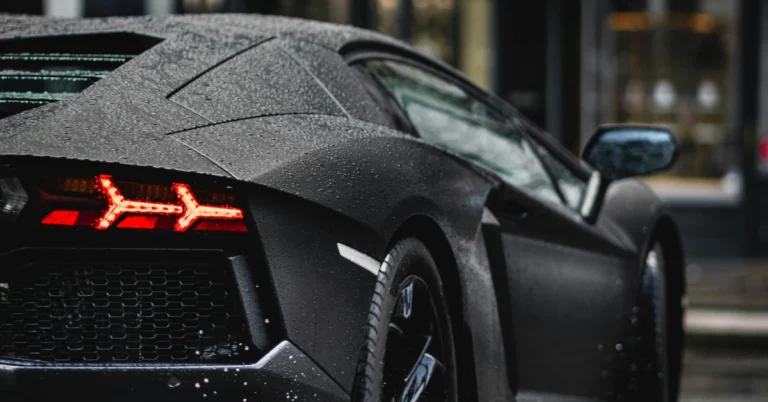Car seats are a magnet for spills, stains, and various types of messes that inevitably come with frequent use, especially if you have children or pets. However, learning how to get stains out of car seats is essential for maintaining your vehicle’s upholstery in good condition, preventing odors, and preserving its resale value. In this article, we will explore some efficient methods that can help you tackle different types of stains on car seat fabric.
How to Get the Stains Out of Car Seats

It is important to identify the type of stain, as different substances require different cleaning solutions and techniques. For instance, some common types of stains found on car seats include oil, grease, ink, juice, coffee, and pet accidents. Each of these stains can be stubborn, but with the right approach and materials, you can easily restore your car seats to pristine condition.
Before diving into the cleaning process, gather all the necessary cleaning supplies, such as a vacuum cleaner, soft brush, microfiber cloth, and specific cleaning solution. Familiarizing yourself with the care instructions provided by your car seat manufacturer is also important, as this ensures that you do not damage the material while attempting to remove the stain. With the right knowledge and resources, you can confidently tackle any car seat stain, ensuring that your vehicle remains fresh and inviting for both you and your passengers.
Identifying and Treating Different Types of Stains

Car seat stains can come in many forms, but with the right knowledge and tools, they can be effectively removed. In this section, we will explore different types of stains and provide you guidance on how to clean them.
Removing Oil-Based Stains
Oil-based stains, such as grease or cosmetics, can be stubborn and hard to remove. To treat these stains, first use a butter knife to gently scrape off any excess material from the upholstery. Next, prepare a cleaning solution of dish soap and water, making sure to use a soap with degreasing properties. Apply the solution to the stain and allow it to sit for a few minutes before gently blotting with a clean cloth. For tough oil stains, you may need to use a specialized degreaser to fully break down the oil.
Eliminating Food and Drink Spills
Food and drink spills, such as coffee or juice, can often be handled with a simple homemade cleaning solution. Start by blotting any excess liquid with a clean cloth. Next, mix equal parts baking soda and water to form a paste. Apply the paste to the spill and let it sit for a few minutes before gently scrubbing with a soft brush. Afterwards, mix equal parts water, dish detergent, and vinegar to create a vinegar solution. Apply the vinegar solution to the stain and use a clean cloth to blot until the stain is gone.
Cleaning Tough Stains
For tougher stains, such as ink or nail polish, special techniques are required. To remove ink stains, apply a small amount of non-gel toothpaste directly onto the stain and gently scrub with an old toothbrush. Rinse thoroughly with water and blot dry with a clean cloth. Be cautious when using nail polish remover on upholstery, as it may damage certain fabrics. When using nail polish remover, always test a small, inconspicuous area first to ensure it is safe for your upholstery. Apply the nail polish remover to the stain using a cotton swab or cloth and blot gently until the stain is gone.
Techniques for Deep Cleaning Car Seats

Using Household Products for Effective Cleaning
Fabric car seats can often be cleaned using household products like vinegar, baking soda paste, and club soda. To create a homemade cleaner, mix one part vinegar with one part water, and spray it directly onto the stains. You can use a brush or cloth to gently agitate the stain and lift it from the fabric. For stubborn stains on fabric seats, applying a baking soda paste or club soda can make them easier to remove.
When cleaning leather car seats, it’s crucial to use a mild, pH-balanced cleaner made specifically for leather. Avoid using household products like vinegar or baking soda paste, as they can damage the leather surface.
For vinyl seats, simply use a mixture of warm water and mild soap to wipe down the surface. Always remember to air dry the seats by leaving the windows open, allowing the cleaned upholstery to dry completely without molding.
Professional Methods: Steam Cleaning and More
If household products don’t provide satisfactory results or you’re dealing with heavy-duty stains on your car seats, you may want to consider steam cleaning as a more effective solution. Steam cleaning can lift dirt and grime while also acting as a natural deodorizer by killing odor-causing bacteria. Some professional services specialize in automotive steam cleaning and can provide deep cleaning for any upholstered surfaces in your vehicle.
When opting for a professional cleaning, you can also consider using a heavy-duty upholstery cleaner designed for automotive use. These cleaners are formulated to break down tough stains on various materials like fabric, leather, and vinyl seats.
Clean car upholstery can be maintained with regular vacuuming and wiping down to remove dust and dirt. If you tackle spills and stains quickly, you can prevent them from setting in and becoming more challenging to remove.
Frequently Asked Questions
What home remedies effectively remove stains from car seats?
Several home remedies can help remove stains from car seats. A popular option is a solution of white vinegar, club soda, and dish soap. You can also use baking soda by mixing it with warm water until it forms a goopy consistency similar to icing.
Which commercial cleaners are best for treating car seat stains?
When choosing a commercial cleaner, it is essential to look for products designed specifically for car seat stains. Some good options include upholstery cleaners and fabric stain removers. You can find car seat stain removal products on Amazon that offer excellent results.
Can I clean fabric car seats without causing water stains?
Yes, you can clean fabric car seats without causing water stains. Proper rinsing and drying are essential to avoid water stains. After removing the stains with your chosen cleaning solution, spray the area with plain water and wipe it with a cloth. Then, use a dry cloth to absorb excess moisture, and leave the car windows or doors open to allow the seat to dry completely.
What steps can I take to remove liquid stains from car seats?
To remove liquid stains from car seats, first, blot the excess liquid with a clean cloth or paper towel. Then, use a mild cleaner and a soft-bristled brush to gently scrub the stained area in circular motions. Rinse the area with plain water and blot it again with a clean cloth to remove residue.
Why might stains reappear on car seats after cleaning?
Stains may reappear on car seats after cleaning because of residual dirt or cleaning solution that remains within the fabric. To prevent this, make sure to thoroughly rinse the cleaned area and give it enough time to dry.
Is hydrogen peroxide safe and effective for removing car seat stains?
Hydrogen peroxide can be safe and effective for removing car seat stains if used correctly. However, before using hydrogen peroxide, test on a small, inconspicuous spot to ensure it does not damage or discolor the fabric. If no adverse effects are observed, you can apply it to the stained area using a cloth or sponge, then rinse thoroughly with water.





